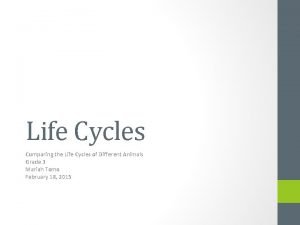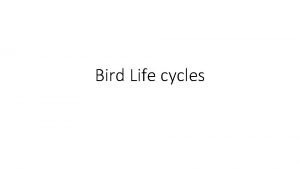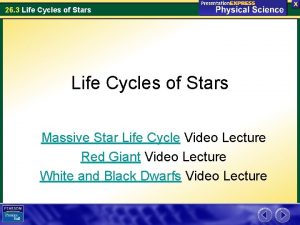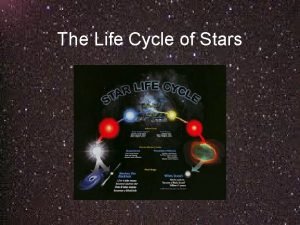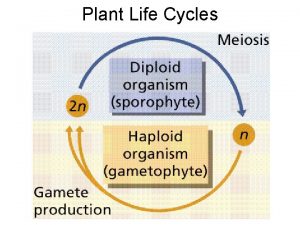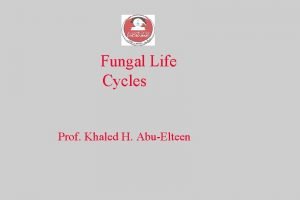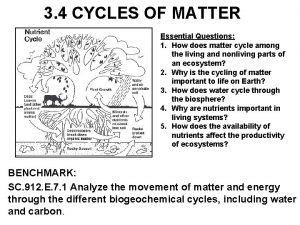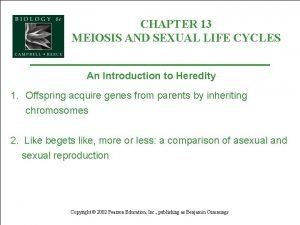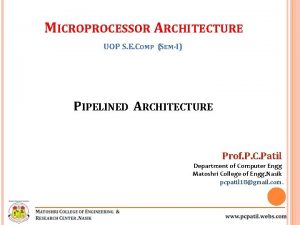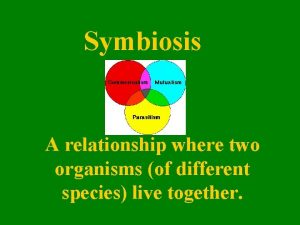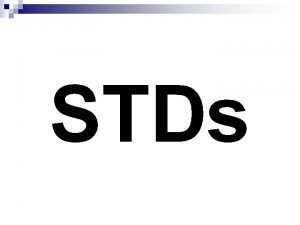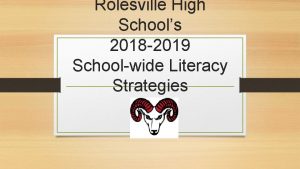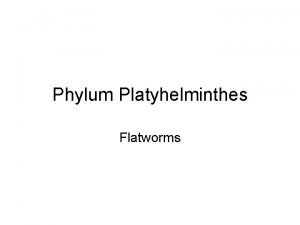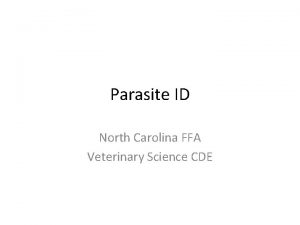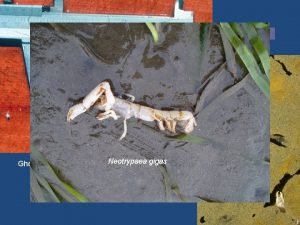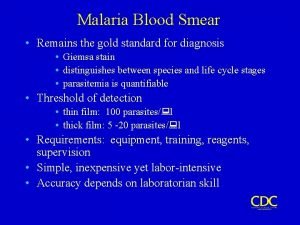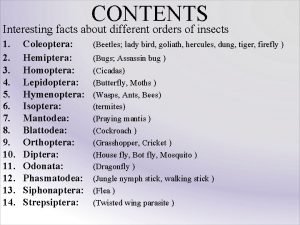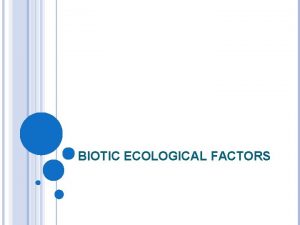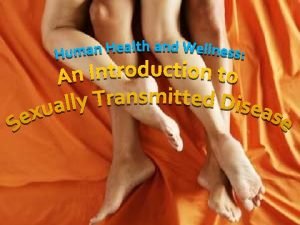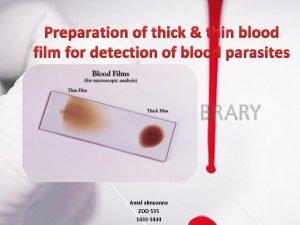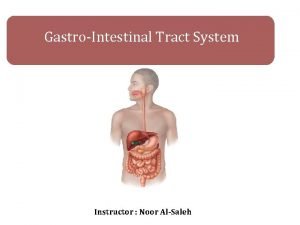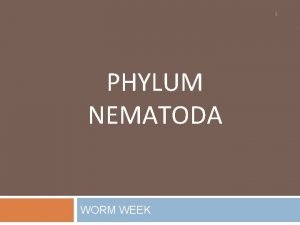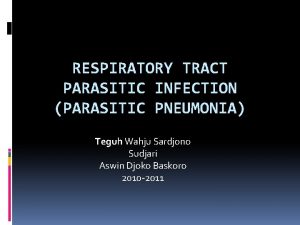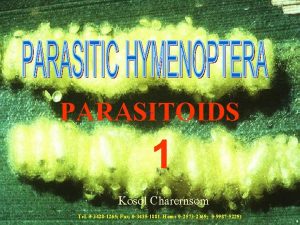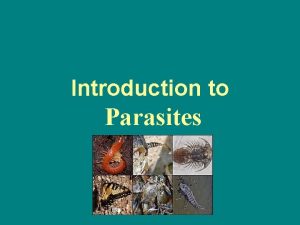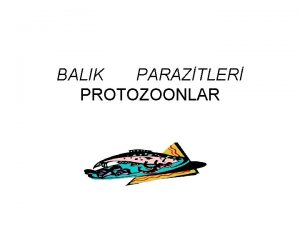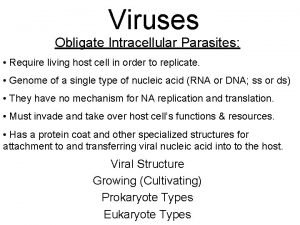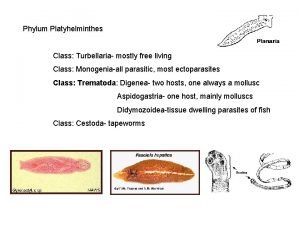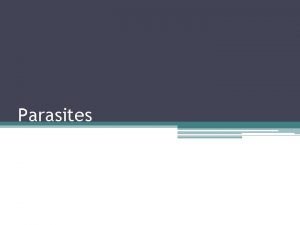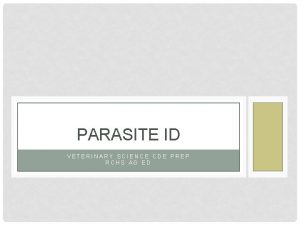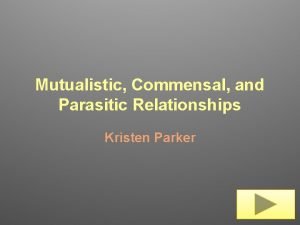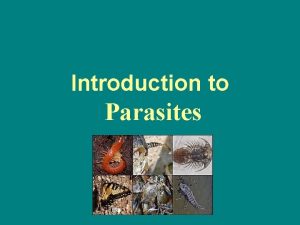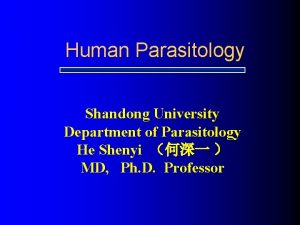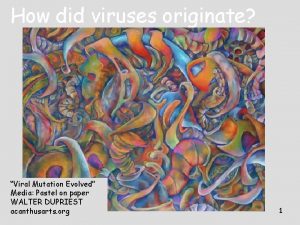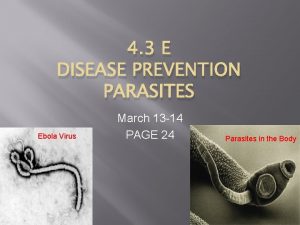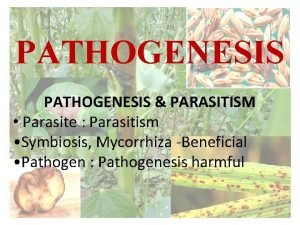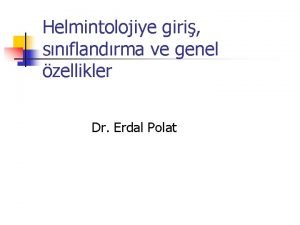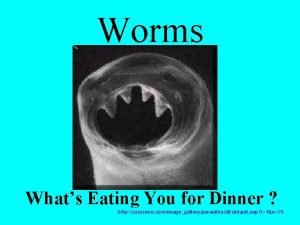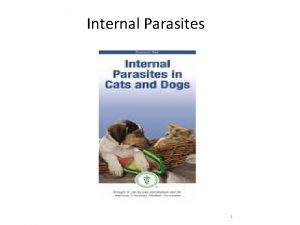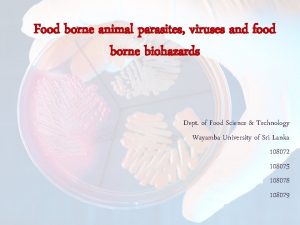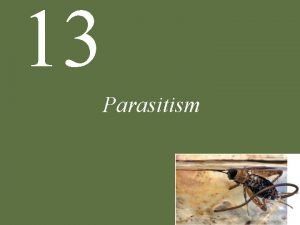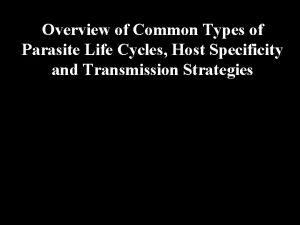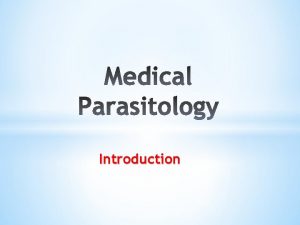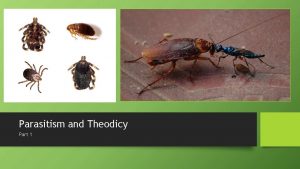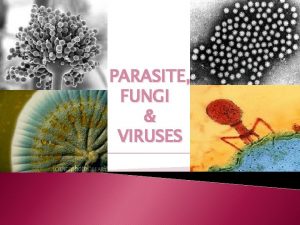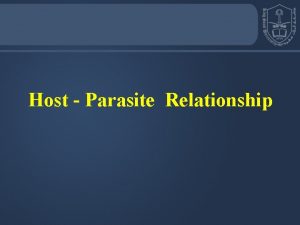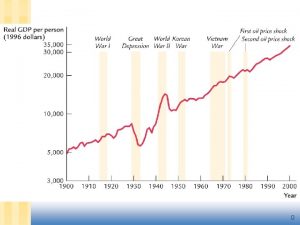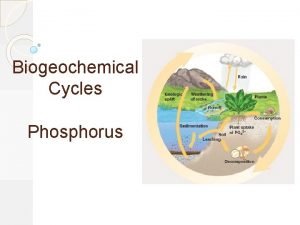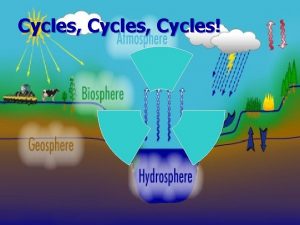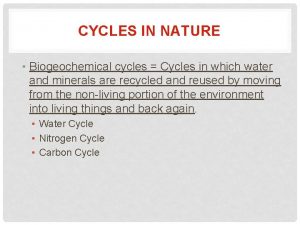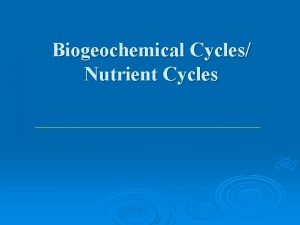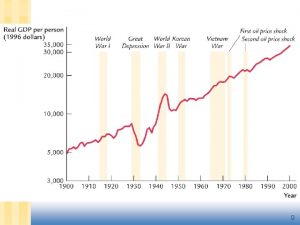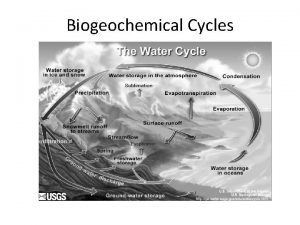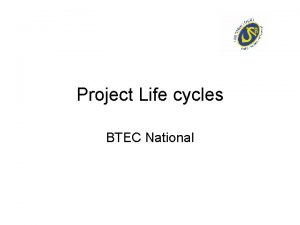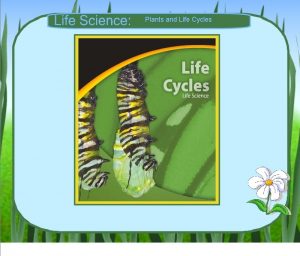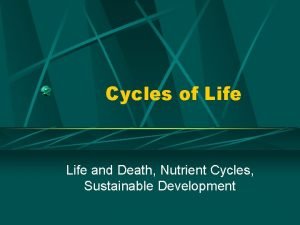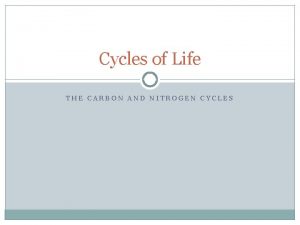Overview of Common Types of Parasite Life Cycles




















































- Slides: 52

Overview of Common Types of Parasite Life Cycles

Definitions of Hosts Many parasites have more than one host in their life cycle. These hosts have different roles and are given specific names.

Definitions of Hosts • Definitive host – a host in which the parasite reaches sexual maturity and undergoes reproduction.

Definitions of Hosts • Definitive host – a host in which the parasite reaches sexual maturity and undergoes reproduction. • Intermediate – a host in which the parasite undergoes larval development but does not reach sexual maturity.

Definitions of Hosts • Definitive host – a host in which the parasite reaches sexual maturity and undergoes reproduction. • Intermediate – a host in which the parasite undergoes larval development but does not reach sexual maturity. • Paratenic host (Transport host) – a host in which a parasite survives without undergoing further development. A paratenic host accumulates and maintains stages of a parasite, and although beneficial, is not essential to the life cycle.

Definitions of Hosts • Vector- any agent, either animate or inanimate (such as wind, water, or arthropod) that transmits an infectious organism.

Definitions of Hosts • Vector- any agent, either animate or inanimate (such as wind, water, or arthropod) that transmits an infectious organism. • Biological Vector- a vector in which a parasite lives or develops. The parasite undergoes morphologic change and/or multiplication, and the vector is usually essential for the life cycle.

Definitions of Hosts • Vector- any agent, either animate or inanimate (such as wind, water, or arthropod) that transmits an infectious organism. • Biological Vector- a vector in which a parasite lives or develops. The parasite undergoes morphologic change and/or multiplication, and the vector is usually essential for the life cycle. • Mechanical Vector- a vector which transmits a parasite by mechanical means only. It may be living or non-living and is not essential for the parasite’s life cycle.

Outline • Monogenea: Direct Life Cycles and Autoinfection (Complex or Simple? ) • Trematoda (Digenea): Complex Life Cycles • Difficulty of Solving Life Cycles Example Cestodes (Tapeworms)

Platyhelminthes

Phylum Platyhelminthes Class Monogenea Class Cestoidea Class Trematoda Subclass Digenea

Class Monogenea: • Most ecto-parasites of fish. • Some endo-parasites of urinary bladder and mouth of amphibians and reptiles. • Body covered by tegument. • Posterior hooks with opisthaptor (haptor). • Direct life cycle with single host.

Opisthaptor (Haptor) Ciliated larva



Life cycle of Ecto parasitic monogenean

Gyrodactylus sp.

Adult worms contain several generations of embryos boxed one inside another and are often referred to as "Russian Dolls". Each parasite gives birth to a fully grown worm which attaches to the host alongside its parent and this can lead to exponential population growth.

The embryo is separated from the parental by a metabolically-active uterus lining, which appears to form a "placental-type" role. The F 2 embryo (not shown) derives its nutrients directly from the F 1 embryo.

Gyrodactylus • The reproductive biology of Gyrodactylus is further complicated as different modes of reproduction (asexual, parthenogenesis and sexual) may be involved in the life cycle of an individual worm.


Gyrodactylus sp.

Diplozoon paradoxum


Polystoma nearcticum Life cycle of Endo parasitic monogenean

Polystoma nearcticum




Spadefoot toad

Tadpole of Spadefoot toad

Tadpoles of Spadefoot Toads

Temporal adaptation Spadefoot toads are parasitized by a Monogenean Pseudodiplorchis americanus

Polystoma nearcticum Pseudodiplorchis americanus

Pseudodiplorchis americanus

Pseudodiplorchis americanus

Pseudodiplorchis americanus









Autoinfection

Oculotrema hippopotami

Phylogeny ? ?

What animals do you see in this photo?

Phylogeny

Phylogeny

nd 2 Hypothesis
 Parasite life cycle
Parasite life cycle Carbon cycle poem
Carbon cycle poem Correct order
Correct order How many eggs do kiwis lay
How many eggs do kiwis lay Section 26.3 life cycles of stars
Section 26.3 life cycles of stars What is charted on an hr diagram?
What is charted on an hr diagram? Style fashion and fad life cycles
Style fashion and fad life cycles Plant life cycles and alternation of generations
Plant life cycles and alternation of generations Xenosporas
Xenosporas виды проектов
виды проектов Matter cycle
Matter cycle Chapter 13 meiosis and sexual life cycles
Chapter 13 meiosis and sexual life cycles ……………types of bus cycles / operations in 80386dx
……………types of bus cycles / operations in 80386dx Tapeworm and dog symbiotic relationship
Tapeworm and dog symbiotic relationship Parasites two examples
Parasites two examples Std from oral
Std from oral An unlikely parasite: the mistletoe answer key
An unlikely parasite: the mistletoe answer key Internal and external parasites
Internal and external parasites Calliphoridae
Calliphoridae Orthione griffenis
Orthione griffenis Applique forms malaria
Applique forms malaria Herbivores carnivores omnivores scavengers decomposers
Herbivores carnivores omnivores scavengers decomposers Do beetles taste like apples
Do beetles taste like apples Parasite structure
Parasite structure Parasite std
Parasite std Thick and thin film preparation
Thick and thin film preparation Hyminoptera
Hyminoptera Balantidium coli infective stage
Balantidium coli infective stage Worm
Worm Aswin djoko baskoro
Aswin djoko baskoro Cirrospilus
Cirrospilus Parasites classification
Parasites classification Parasite
Parasite Invertebrates characteristics
Invertebrates characteristics Structure of bacteriophage
Structure of bacteriophage Monogenia
Monogenia What is a parasitism
What is a parasitism Ancylostomatidae
Ancylostomatidae Smurf parasite
Smurf parasite Commensalism and parasitism
Commensalism and parasitism Classification of host
Classification of host Facultative parasite
Facultative parasite Dyesthesiasis
Dyesthesiasis Parasite
Parasite Blastomycosis
Blastomycosis Obligatory parasite
Obligatory parasite What parasite
What parasite What parasite
What parasite Curezone
Curezone A definitive host harbors which stage of a parasite
A definitive host harbors which stage of a parasite Trmatoda
Trmatoda Parasite
Parasite Common factors of 48 and 60
Common factors of 48 and 60


